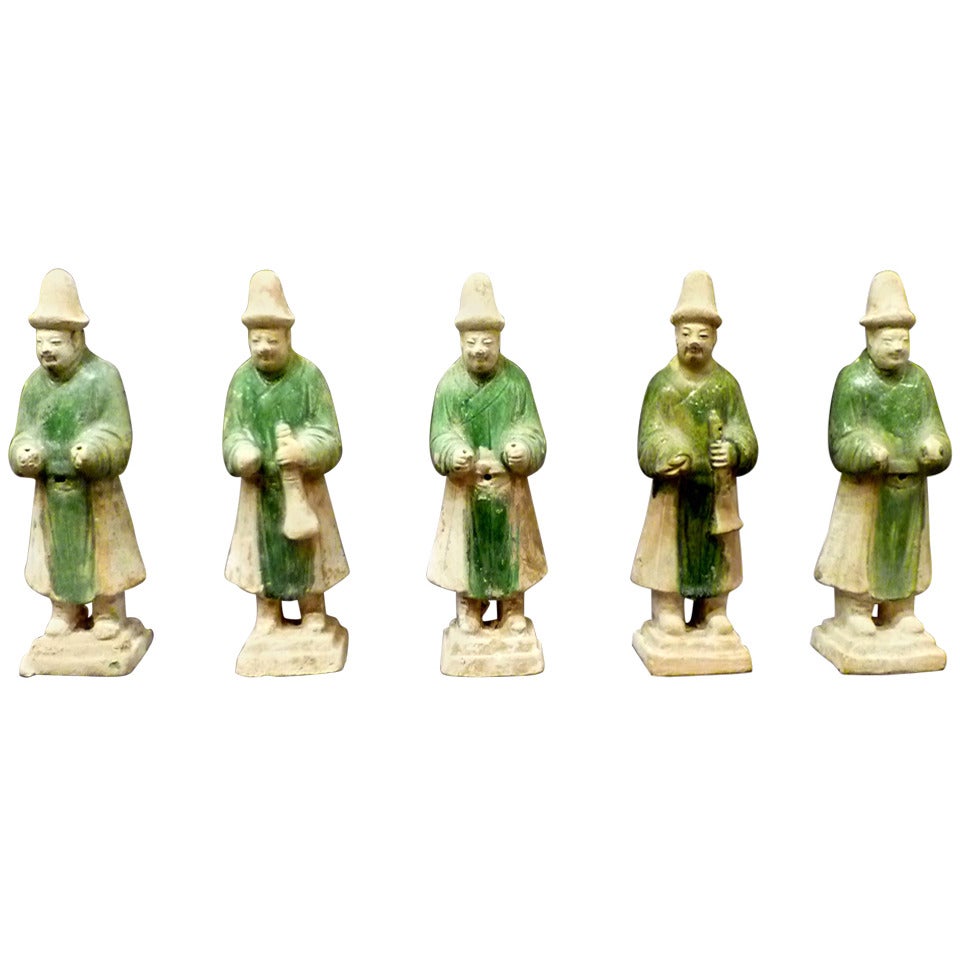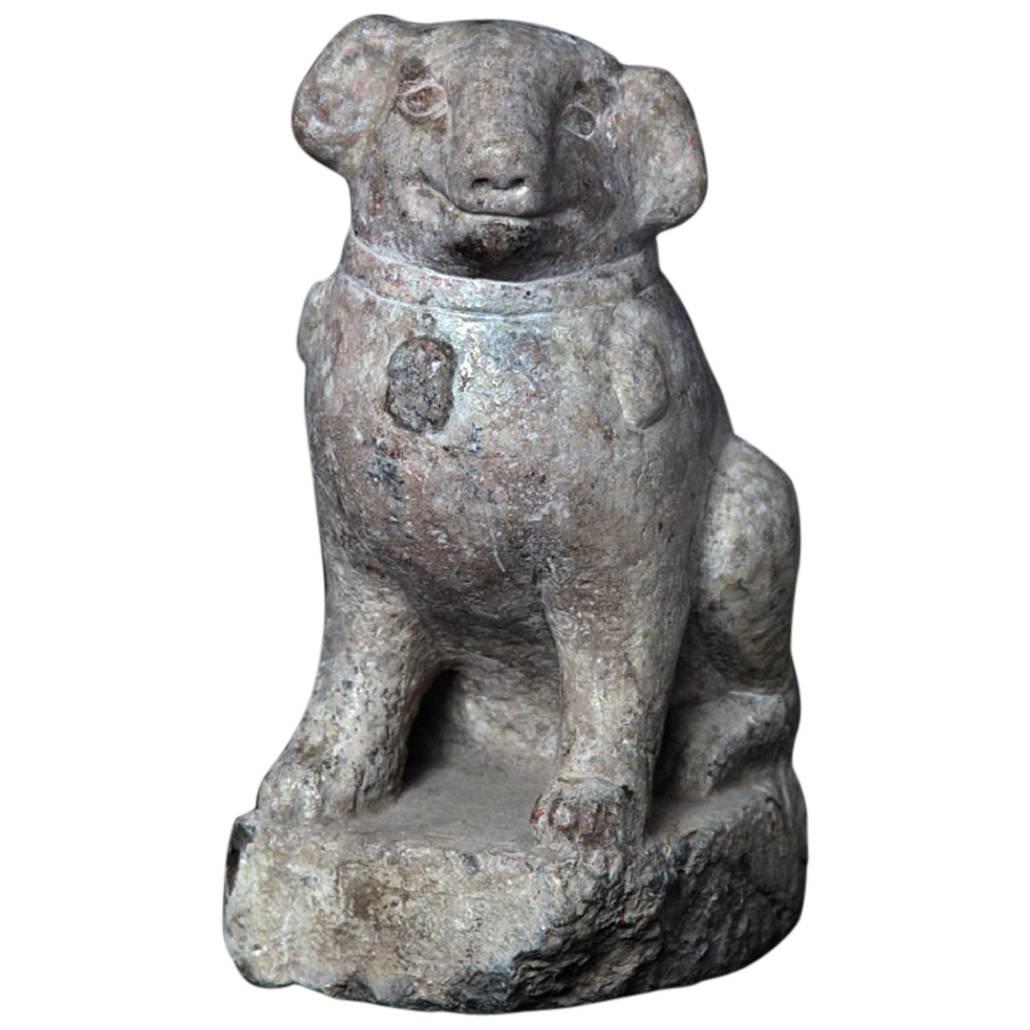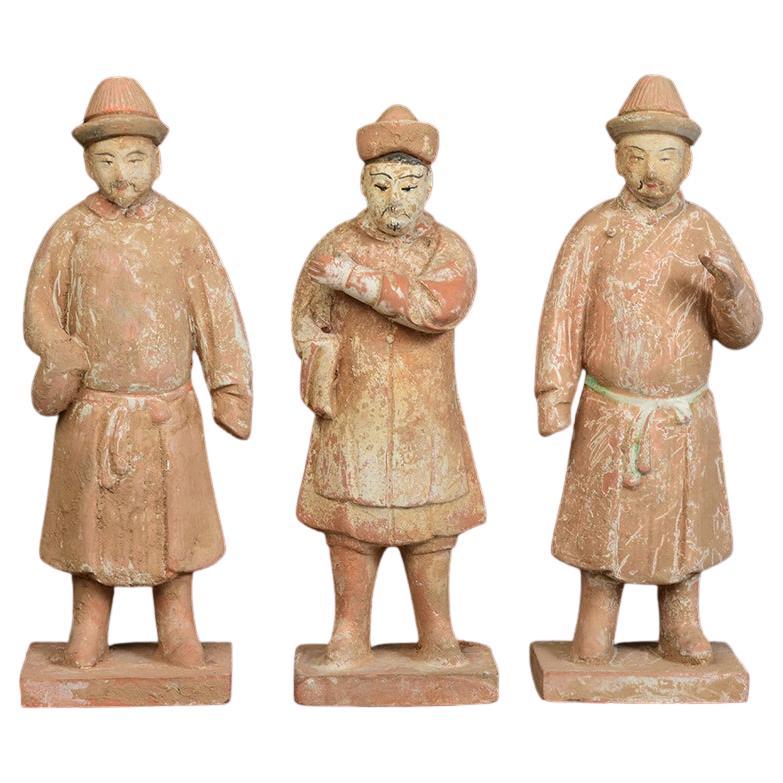Items Similar to Ming Dynasty Very Rare Wooden Bust of Lohan
Want more images or videos?
Request additional images or videos from the seller
1 of 10
Ming Dynasty Very Rare Wooden Bust of Lohan
About the Item
Very serene depiction of a Lohan carved in wood, eroded with the pass of time. Lohan is the Chinese term, derived from the Sanskrit word Arhan, for a disciple or follower of Buddha who has reached a state of enlightenment. The Lohan had been a popular subject in Chinese art at least since the cultural flourishing of the Tang Dynasty. Its expression reflects tranquility. Having achieved enlightenment, Lohans were free from all earthly desires and no longer subject to the cycle of rebirth.
Custom-made metal base.
- Dimensions:Height: 17 in (43.18 cm)Width: 14 in (35.56 cm)Depth: 8 in (20.32 cm)
- Style:Ming (Of the Period)
- Period:
- Date of Manufacture:1368-1644 AD
- Condition:
- Seller Location:San Pedro Garza Garcia, MX
- Reference Number:
About the Seller
3.7
Vetted Seller
These experienced sellers undergo a comprehensive evaluation by our team of in-house experts.
1stDibs seller since 2017
22 sales on 1stDibs
- ShippingRetrieving quote...Ships From: San Pedro Garza Garcia, Mexico
- Return PolicyA return for this item may be initiated within 3 days of delivery.
More From This SellerView All
- Ming Dynasty Chinese Countryside Villa - TL TestedLocated in San Pedro Garza Garcia, Nuevo LeonExtremely rare Chinese model of a countryside villa for the royal courtiers and ministries of the Ming Dynasty -1368-1644 AD- showing three guest houses and one main entry. The villa is surrounded by a cuadrangular wall painted with bucolic scenes of garden, mountains, and bamboo forests. The roof tiles are glazed in green enamel with yellow finials – as the ones in the forbidden city – typical from the Ming epoch. Truly a museum piece. The doors swivel and are painted in ochre. State of preservation: impeccable mint condition with original paintings, all of the original parts are complete, except for one house which is missing part of the plinth (broken during transport). Each part has been tested for authenticity, consisting of eight separate TL tests...Category
Antique 15th Century and Earlier Chinese Ming Antiquities
MaterialsTerracotta
- Lady Guanyin Bodhisattva Gilded Wood Carving - Ming Dynasty, China 1368-1644 ADLocated in San Pedro Garza Garcia, Nuevo LeonMagnificent Lady Guanyin Bodhisattva seated in Royal Relaxation pose hand-carved in Gilded Wood with traces of paint still visible. This expressi...Category
Antique 15th Century and Earlier Chinese Ming Antiquities
MaterialsWood
- Ming Dynasty Celestial Deity Head Carved in Stone - China '1368-1644 AD'Located in San Pedro Garza Garcia, Nuevo LeonWonderful celestial deity head with a jovial expression in stone with a finely engraved cap. It is mounted on a custom lucite base. This piece is accompanied by a Certificate of Authenticity, and Certificate of Expertise by Jean-Yves Nathan - Specialist in Asian Arts for the CEDEA (The European Confederation of Art Experts). The Ming dynasty was the ruling dynasty of China – then known as the Empire of the Great Ming...Category
Antique 15th Century and Earlier Chinese Ming Antiquities
MaterialsStone
- 6 Elegant Ming Dynasty Court Attendants in Glazed Terracotta, China 1368-1644 ADLocated in San Pedro Garza Garcia, Nuevo LeonA fine set of a six court attendants as in the Forbidden City of Beijing, elegantly dressed in a Green & Red Daopao – a traditional men’s formal attire from the Ming Dynasty dated 1368-1643 A.D. – with glazed robes and Red Pigment remains in their hat and belts. They stand in an honorary posture atop a red plinth, some with orifices in their hands, where spirit objects were placed to comfort or satisfy the deceased. The heads are detachable, as often seen on the larger figures from this period. They are accompanied by a Certificate of Authenticity, and Certificate of Expertise by Jean-Yves Nathan - a leading authority specialized in Far East Archaeology from the CEDEA (The European Confederation of Art Experts). Burial figurines of graceful dancers, mystical beasts, and everyday objects reveal both how people in early China approached death and how they lived. Since people viewed the afterlife as an extension of worldly life, these figurines, called mingqi, sometimes referred as “spirit utensils” or “vessels of ghosts” disclose details of routine existence and provide insights into belief systems over a thousand-year period. The Ming dynasty was the ruling dynasty of China – then known as the Empire of the Great Ming – for 276 years (1368–1644 AD). Founded by Chu Yuan-chang, the rebel leader that was successful in removing the mongols from the throne. Chinese control was re-asserted in China and eastern Asia. Literature became more important, schools were created, and the justice system was reformed. The Ming dynasty is described by some as "one of the greatest eras of orderly government and social stability in human history,” was the last imperial dynasty in China ruled by ethnic Han Chinese. The practice of burying ceramic objects with the deceased went into decline from the 10th to the 14th Century AD. There was a revival in placing miniature representations of glazed terracotta objects such a furniture, food offerings, horses, miniature statues...Category
Antique 15th Century and Earlier Chinese Ming Antiquities
MaterialsTerracotta
- Magnificent Court Attendants in Terracotta - Ming Dynasty, China 1368-1644 AD TLLocated in San Pedro Garza Garcia, Nuevo LeonA magnificent pair of male and female courtiers from the Ming Dynasty (1368-1644 CE) in excellent condition. They are wearing traditional Daopao robes in green and black garments wit...Category
Antique 15th Century and Earlier Chinese Ming Antiquities
MaterialsTerracotta
- Very Elegant Tang Dynasty Dignitary in Orange Terracotta, China '618-907 AD'Located in San Pedro Garza Garcia, Nuevo LeonVery elegant terracotta dignitary in blue and red robes standing with the hands joined at the chest. He wears a blue headdress with a bird at its center. Orange Terracotta This gorg...Category
Antique 15th Century and Earlier Chinese Tang Antiquities
MaterialsTerracotta
You May Also Like
- Set of Six Ming Dynasty Green Glazed Pottery Statue of AttendantsLocated in Greenwich, CTA set of six green glazed pottery statue of attendants, Ming dynasty 1368-1644.Category
Antique 16th Century Chinese Ming Antiquities
MaterialsPottery
- Set of Refine Ming Dynasty Green Glazed Attendants and a Sedan ChairLocated in Greenwich, CTA set of very refined green glazed attendants and one sedan chair, each with benevolent facial expression, beautiful colors and lines, Ming dynasty 1368-1644. Three glazed attendants...Category
Antique 15th Century and Earlier Chinese Ming Sculptures and Carvings
MaterialsPottery
- Important Ancient Chinese Effigy Pug Dog, Ming Dynasty 1368-1644Located in South Burlington, VTChina, a carving of a canine “Pug”, Ming Dynasty, 1368-1644 CE Dimensions: 38 cm, 15” High Photographs taken indoors and out of doors for your viewing pleasure. The hand carved limestone beast shown on its haunches with naturalistic joyful expression and a well defined compact head, ears, noes, eyes, feet, and tail parted to one side on reverse with distinctive collar ornament seated four square on a thick base all-over showing a weathered surface from significant age. Formerly exhibited “Asia Week” New York City, Fuller Building, Hutton Gallery 2006. Provenance: ex collection luoyang, Henan Province, China. Includes custom display base as shown Catalog reference: 35 years collecting 35 treasures, Number 35, p.76 (photo) In ancient China, it is a well-known fact that several types of small dogs were bred and were favored pet gifts between emperors and kings including Lion Dogs, Pekingese and Lo-sze breeds. Some Lo-sze are pictured wearing collars with bells a frequent combination fancied by European royalty of the seventeenth and eighteenth centuries. Lo-sze or pugs were prized for their compact body, good bones, flat face, square jaw, short coat, curled tail, side set back ears, and temperate disposition. History: Placing stone animals in important tombs can be traced back at least to the Qin Dynasty (221-206 BCE), some two thousand years ago. In ancient times, stone animals and human figures placed before imperial tombs symbolized royal power and privilege in addition to decorative functions. The first Ming tomb...Category
Antique 15th Century and Earlier Chinese Ming Sculptures and Carvings
MaterialsLimestone
- Ming Dynasty, A Set of Antique Chinese Pottery Court ManLocated in Sampantawong, THA set of Chinese pottery standing court man. Age: China, Ming Dynasty, A.D. 1368 - 1644 Size: Height 25.9 - 27.4 C.M. / Width 8.9 - 9.1 C.M. Condition: well-preserved old burial...Category
Antique 15th Century and Earlier Chinese Antiquities
MaterialsPottery
- Ming Dynasty, Antique Chinese Painted Pottery ImmortalLocated in Sampantawong, THChinese painted pottery immortal. Age: China, Ming Dynasty, A.D. 1368 - 1644 Size: Height 23 C.M. / Width 11.9 C.M. / Depth 8.5 C.M. Condi...Category
Antique 15th Century and Earlier Chinese Antiquities
MaterialsPottery
- Pair of Very Refined Tang Dynasty Pottery Statue of Guardians, Oxford TL TestedLocated in Greenwich, CTA pair of very refined standing pottery statue of guardians, dramatic facial expression, beautiful detail, early Tang dynasty 618-907, come with one Oxford authentication TL test cer...Category
Antique 15th Century and Earlier Chinese Tang Antiquities
MaterialsTerracotta





